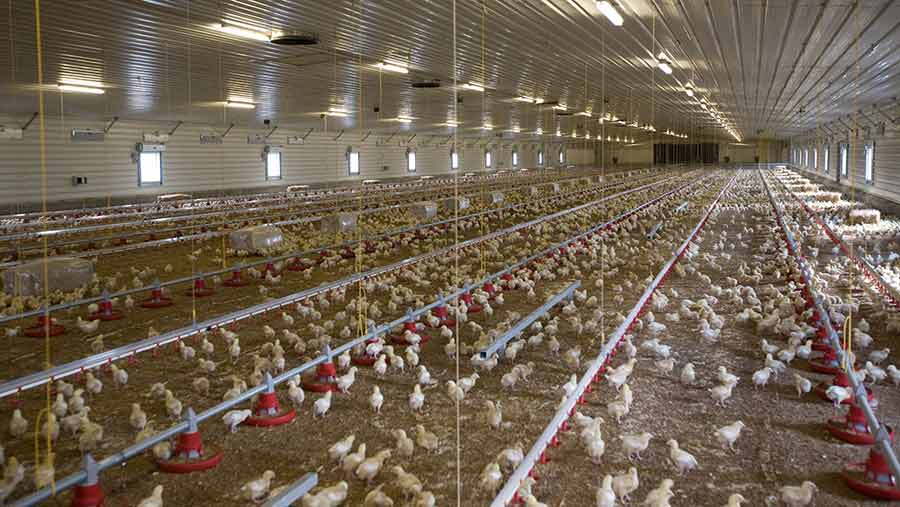Poultry sector growth adds to demand for grain
 © Tim Scrivener
© Tim Scrivener The poultry sector is continuing to grow with a record 785m chick and poult placings made in the eight months to August 2018, according to Defra statistics.
It is the first time the 750m figure has been broken in an eight-month timeframe and marks a rise of 5% on the same period a year ago.
See also: Outlook 2018: Poultry sector is well placed for growth
The growth was being fuelled by strong demand for poultry meat and is having a knock-on effect on demand for grain.
“The Defra data reinforces the position of poultry as one of the key demand centres for grain in the UK,” said AHDB analyst James Webster.
To meet the extra demand, total poultry feed production between June 2017 and June this year grew by 2.1% to a total of 6.3m tonnes.
As the expansion in the poultry flock is continuing it will increase pressure on feed wheat supplies still further.
“Poultry is just one of a range of factors increasing demand for feed wheat, including the effect of the drought on forage supplies.
“This may open the door for alternatives to domestic wheat such as maize,” Mr Webster added.
Plan carefully before diversifying into the sector
Andersons consultant Lily Hiscock urged any farmers to plan carefully before diversifying into the sector, despite the rapid growth.
The poultry industry is predominantly in the hands of large integrated businesses that offer contracts. Under the contracts the poultry firm supplies both the chicks and feed, while the farmer provides the unit and equipment, Ms Hiscock explained.
“It means that any margin to be made is down to the technical expertise of the prospective poultry farmer’s workforce. If poultry production is unfamiliar, making a margin could be challenging, so diversifying requires careful planning,” she warned.
Investment costs could also be high, with costs to set up a unit from scratch at about £18-20/bird place.
“There are other potentially costly factors involved in establishing a unit,” she warned.
Permits for IPPC regulations must be in place before production starts and planning permission for units was becoming increasingly difficult to obtain in some areas.
“The huge number of units being constructed in areas around the big poultry integrators means some planning authorities are clamping down on new developments adding a further complication,” she said.
